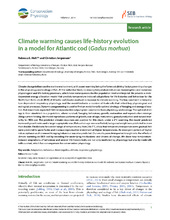Mutation of the highly conserved ser-40 of the HIV-1 p6 gag protein to phe causes the formation of a hydrophobic patch, enhances membrane association, and polyubiquitination of gag
| dc.contributor.author | Hahn, Friedrich | eng |
| dc.contributor.author | Setz, Christian | eng |
| dc.contributor.author | Friedrich, Melanie | eng |
| dc.contributor.author | Rauch, Pia | eng |
| dc.contributor.author | Solbak, Sara Marie Øie | eng |
| dc.contributor.author | Frøystein, Nils Åge | eng |
| dc.contributor.author | Henklein, Petra | eng |
| dc.contributor.author | Votteler, Jörg | eng |
| dc.contributor.author | Fossen, Torgils | eng |
| dc.contributor.author | Schubert, Ulrich | eng |
| dc.date.accessioned | 2015-04-28T12:01:43Z | |
| dc.date.available | 2015-04-28T12:01:43Z | |
| dc.date.issued | 2014-10-02 | eng |
| dc.identifier.issn | 1999-4915 | en_US |
| dc.identifier.uri | https://hdl.handle.net/1956/9842 | |
| dc.description.abstract | The HIV-1 p6 Gag protein contains two late assembly (l-) domains that recruit proteins of the endosomal sorting complex required for transport (ESCRT) pathway to mediate membrane fission between the nascent virion and the cell membrane. It was recently demonstrated that mutation of the highly conserved Ser-40 to Phe (S40F) disturbs CA-SP1 processing, virus morphogenesis, and infectivity. It also causes the formation of filopodia-like structures, while virus release remains unaffected. Here, we show that the mutation S40F, but not the conservative mutation to Asp (S40D) or Asn (S40N), augments membrane association, K48-linked polyubiquitination, entry into the 26S proteasome, and, consequently, enhances MHC-I antigen presentation of Gag derived epitopes. Nuclear magnetic resonance (NMR) structure analyses revealed that the newly introduced Phe-40, together with Tyr-36, causes the formation of a hydrophobic patch at the C-terminal α-helix of p6, providing a molecular rationale for the enhanced membrane association of Gag observed in vitro and in HIV-1 expressing cells. The extended exposure of the S40F mutant to unidentified membrane-resident ubiquitin E3-ligases might trigger the polyubiquitination of Gag. The cumulative data support a previous model of a so far undefined property of p6, which, in addition to MA, acts as membrane targeting domain of Gag. | en_US |
| dc.language.iso | eng | eng |
| dc.publisher | MDPI | en_US |
| dc.rights | Attribution CC BY | eng |
| dc.rights.uri | http://creativecommons.org/licenses/by/4.0/ | eng |
| dc.subject | HIV-1 | eng |
| dc.subject | Gag p6 | eng |
| dc.subject | ubiquitination | eng |
| dc.subject | virus budding | eng |
| dc.subject | Membrane association | eng |
| dc.title | Mutation of the highly conserved ser-40 of the HIV-1 p6 gag protein to phe causes the formation of a hydrophobic patch, enhances membrane association, and polyubiquitination of gag | en_US |
| dc.type | Peer reviewed | |
| dc.type | Journal article | |
| dc.date.updated | 2015-04-09T06:26:59Z | en_US |
| dc.description.version | publishedVersion | en_US |
| dc.rights.holder | Copyright 2014 The Authors | en_US |
| dc.identifier.doi | https://doi.org/10.3390/v6103738 | |
| dc.identifier.cristin | 1215354 | |
| dc.source.journal | Viruses | |
| dc.source.40 | 6 | |
| dc.source.14 | 10 | |
| dc.source.pagenumber | 3738-3765 | |
| dc.subject.nsi | VDP::Mathematics and natural scienses: 400::Basic biosciences: 470::Genetics and genomics: 474 | en_US |
| dc.subject.nsi | VDP::Matematikk og naturvitenskap: 400::Basale biofag: 470::Genetikk og genomikk: 474 | nob |
Files in this item
This item appears in the following Collection(s)
-
Department of Chemistry [432]

